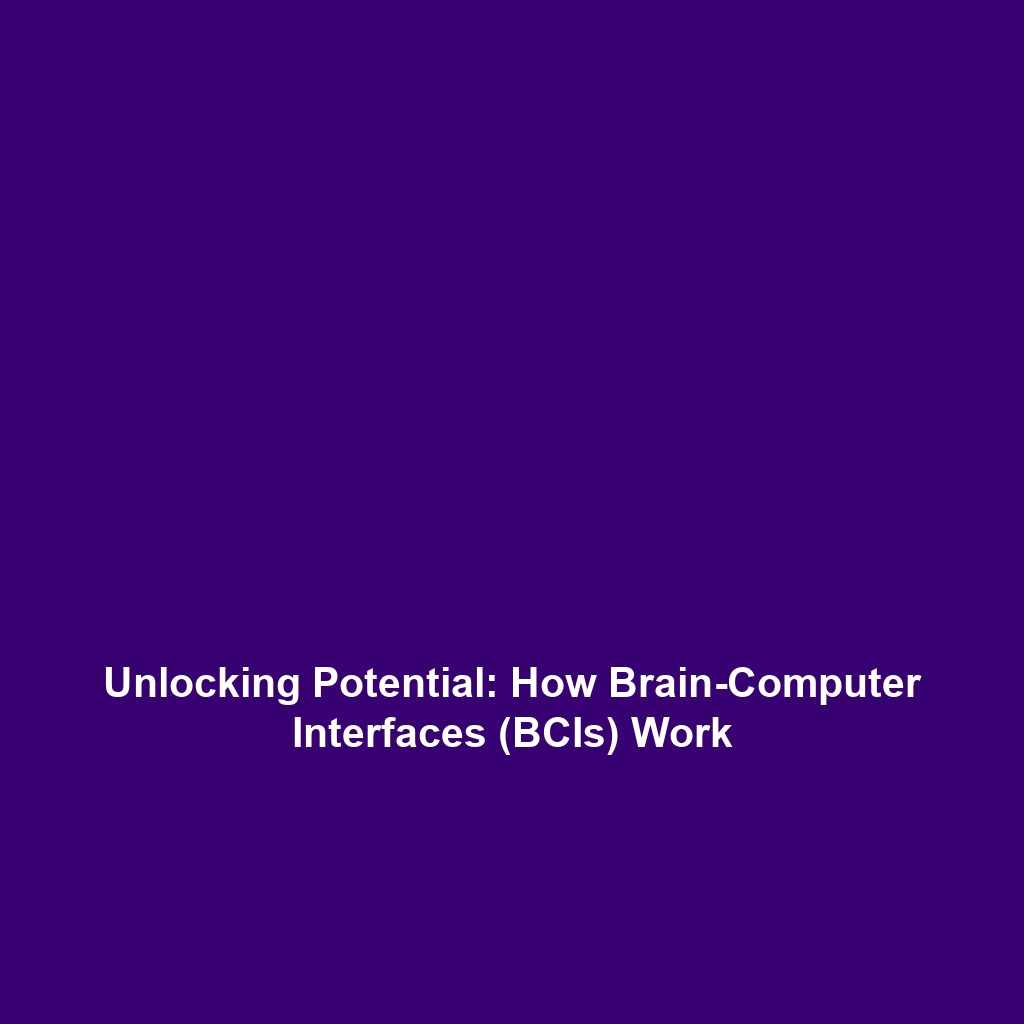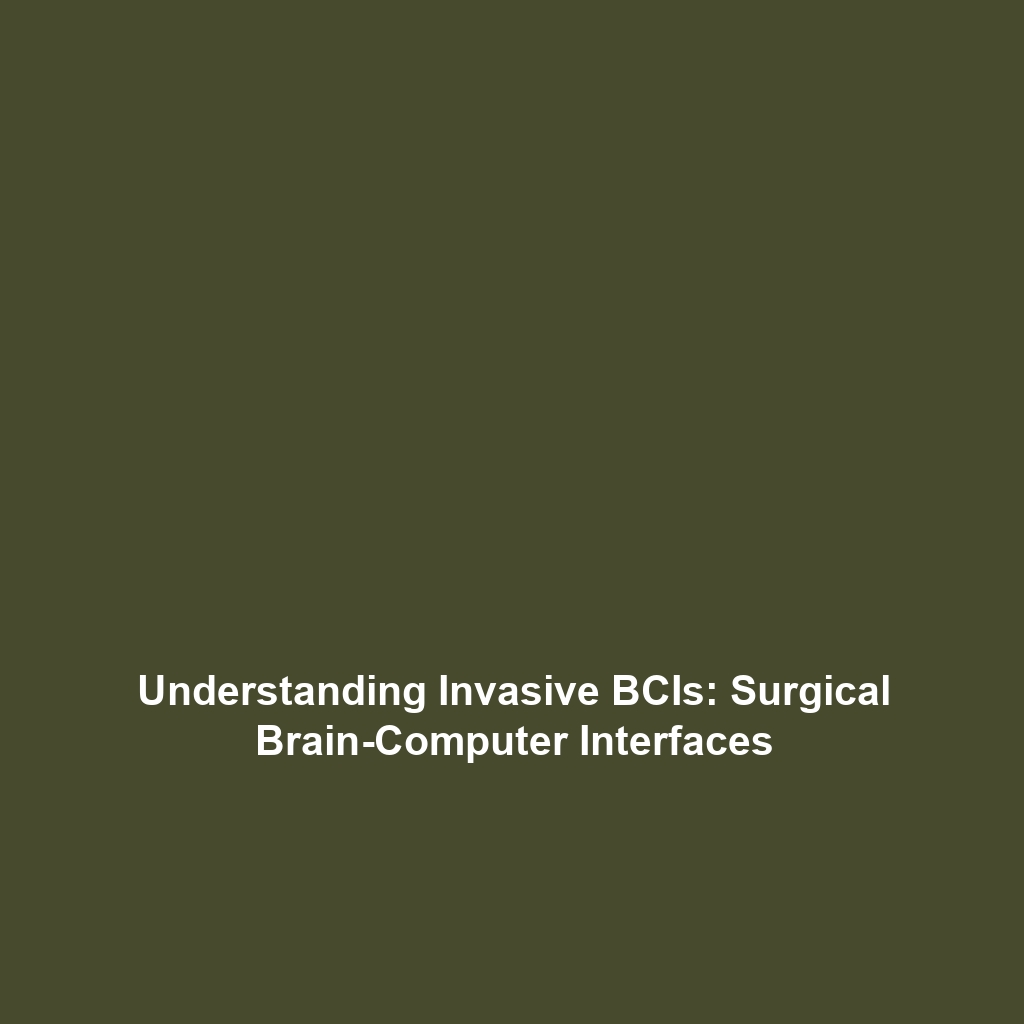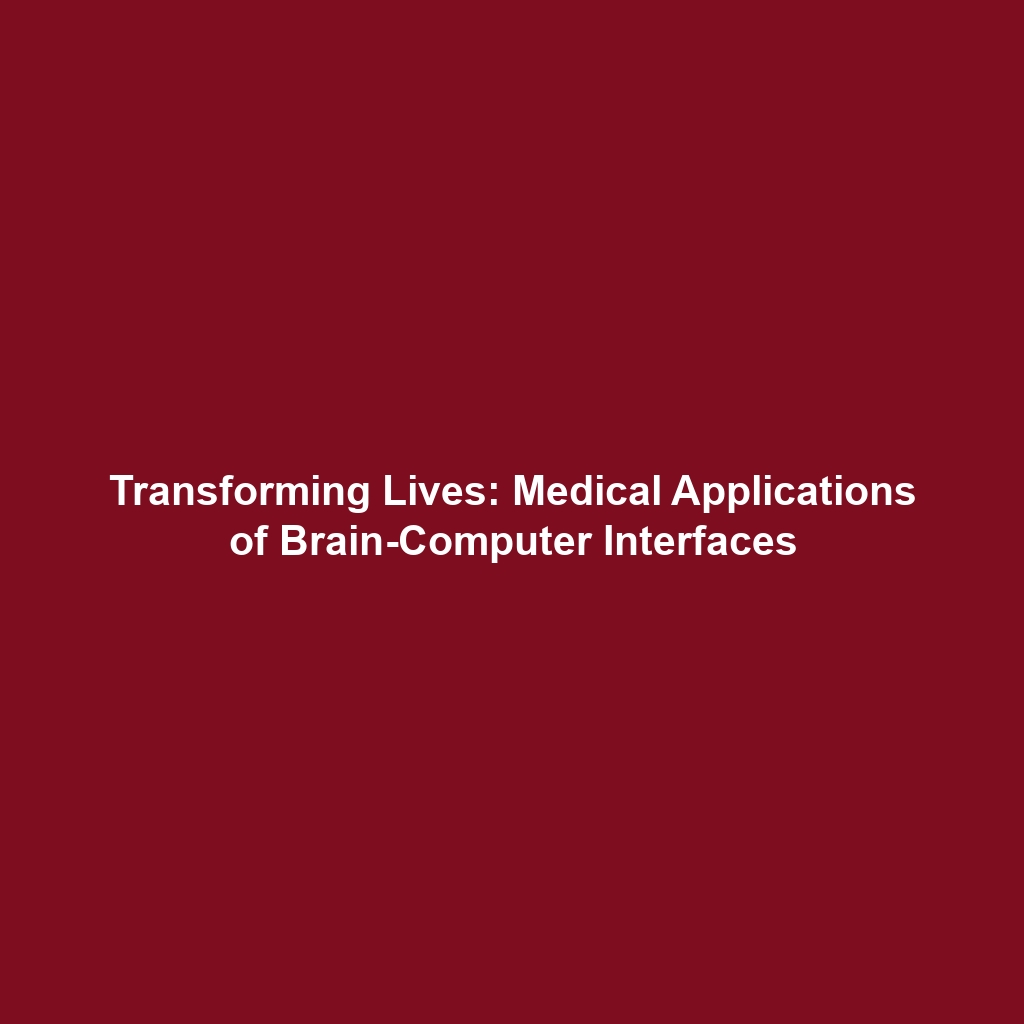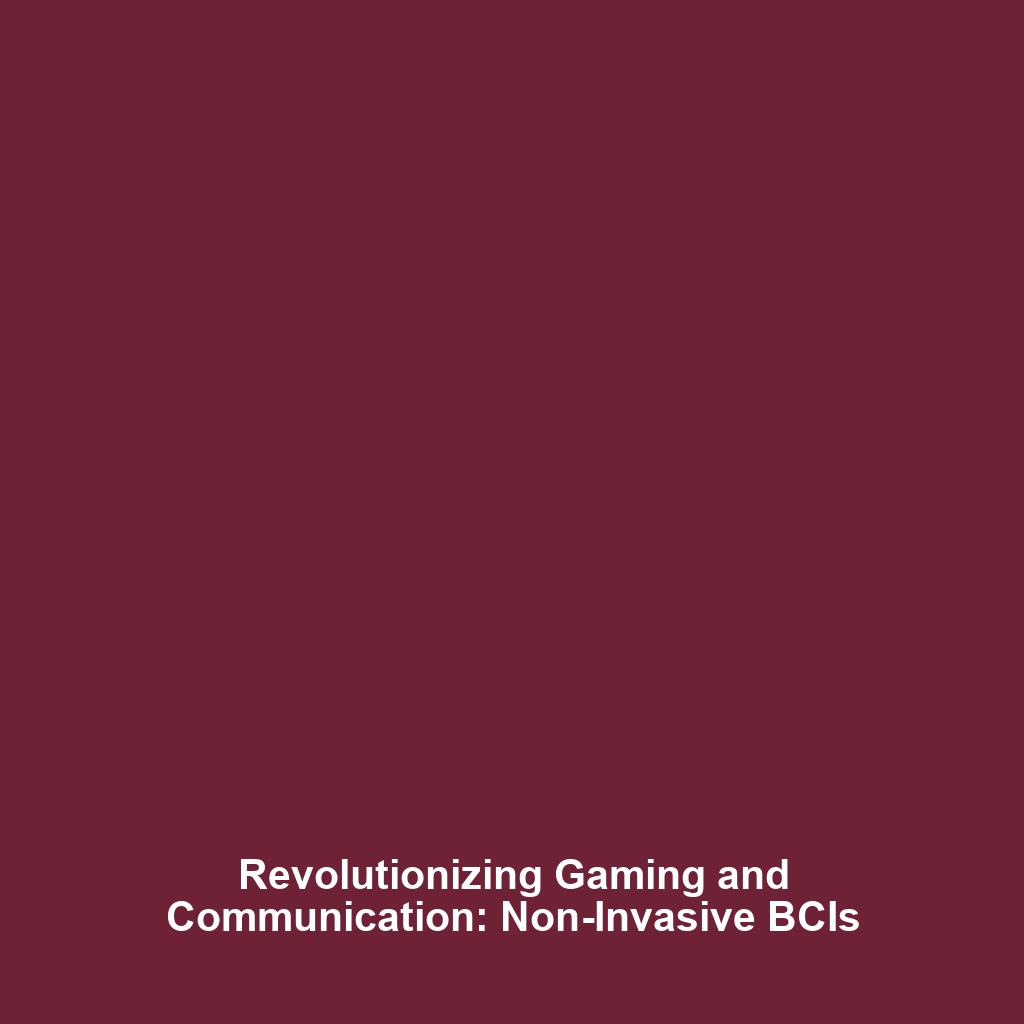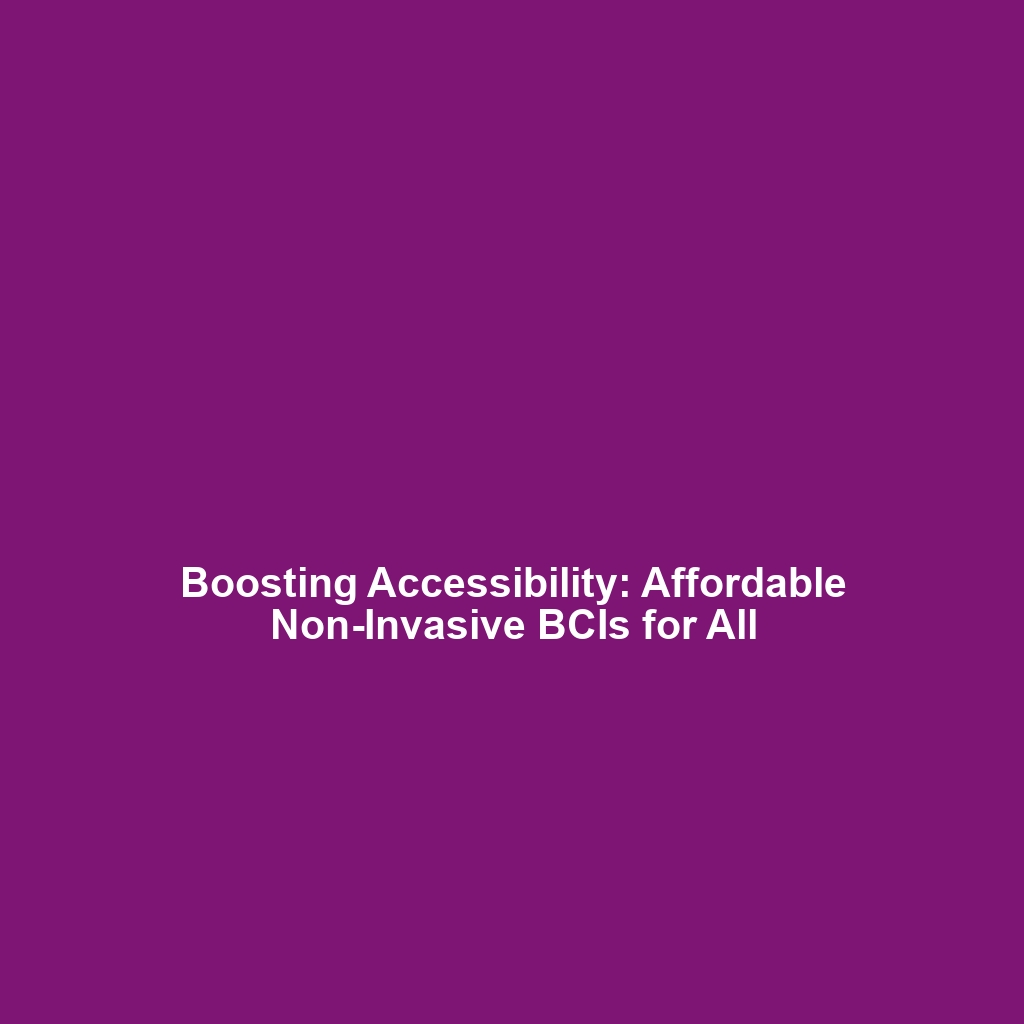Non-Invasive Brain-Computer Interfaces: An In-Depth Overview
Introduction
Non-Invasive Brain-Computer Interfaces (BCIs) represent a significant breakthrough in the field of neuroscience and technology. By enabling direct communication between the human brain and external devices without requiring surgical intervention, these technologies open up new avenues for enhancing communication and control. Understanding Non-Invasive BCIs is crucial for grasping the broader implications of Brain-Computer Interfaces, which range from medical rehabilitation to innovative gaming applications. This article explores the principles, applications, challenges, and future directions of Non-Invasive BCIs.
Key Concepts
Understanding Non-Invasive BCIs
At their core, Non-Invasive BCIs are systems that allow users to control devices using brain signals. These signals are usually captured via:
- Electroencephalography (EEG) – Measures electrical activity in the brain through electrodes placed on the scalp.
- Piroelectric Sensors – Use changes in temperature to detect neural activity.
- Functional Near-Infrared Spectroscopy (fNIRS) – Monitors blood flow and oxygenation levels in the brain.
By interpreting these brain signals, Non-Invasive BCIs can enable actions such as moving a cursor, controlling a prosthetic limb, or even communicating through thought alone. These technologies fall under the broader category of Brain-Computer Interfaces, which encompass both invasive and non-invasive methodologies.
Applications and Real-World Uses
The applications of Non-Invasive BCIs are diverse and impactful, significantly enhancing the quality of life for many individuals. Some noteworthy real-world uses include:
- Assistive Technology: Helping individuals with disabilities control wheelchairs or computer cursors.
- Rehabilitation: Offering new therapies for stroke victims by enabling targeted brain activity.
- Gaming: Creating immersive experiences where players can control in-game actions using their thoughts.
These practical uses demonstrate how Non-Invasive BCIs facilitate communication and control, showcasing their significance within the realm of Brain-Computer Interfaces.
Current Challenges
Despite the advancements in Non-Invasive BCIs, several challenges persist. Some of the key issues in this field include:
- Signal Noise: Brain signals are often weak and can be drowned out by external environmental factors.
- Limited Resolution: Non-Invasive methods may not capture the precision required for complex tasks.
- User Variability: Different individuals generate varied brain signals, complicating standardized use.
- Safety and Comfort: Prolonged usage of devices may lead to discomfort, necessitating user-friendly designs.
Future Research and Innovations
The future of Non-Invasive BCIs looks promising, with ongoing research aimed at overcoming current limitations and enhancing functionality. Key areas of innovation include:
- Improved Algorithms: Developing sophisticated machine learning models to better interpret brain signals.
- Wearable Technology: Creating more comfortable and discreet BCI devices that can be easily integrated into daily life.
- Neurofeedback: Expanding therapies that enable users to gain better control through real-time feedback.
These advancements will likely pave the way for the next generation of Brain-Computer Interfaces, enabling unprecedented capabilities and applications.
Conclusion
In summary, Non-Invasive BCIs represent a transformative aspect of Brain-Computer Interfaces, offering a range of applications across various fields. Despite the challenges, significant research and innovations promise a future where these technologies can greatly enhance communication and control for individuals with disabilities and more. To stay updated on advancements in BCIs, consider exploring our other articles on neuroscience innovations and the future of assistive technologies.


